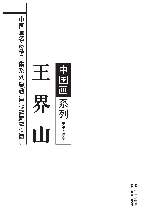
主要责任者: 肖宇
责任方式: 主编
出版者: 四川美术出版社
出版地: 成都
字数: 300 千字
页码: 1-43
开本: 32
中图分类号: J222.7
语种:中
出版时间:2012-11
丛书多卷书否:否
书目简介:本册工具书共收录55条词条。
- 1.生物质能源资源
- 1.生物质能源资源分布状况
- 1.生猪
- 1.生猪收购价格
- 1.用工程立项的办法搞开发
- 1.用聚乙烯取代聚氯乙烯作农膜原料
- 1.用邓小平建设有中国特色社会主义理论,加强和改进对党员的教育
- 1.用邓小平理论教育党员、干部和农民
- 1.由粗放式管理走向规范管理
- 1.由集体分配为主转向家庭经营收入为主
- 1.男、女劳动力总量结构
- 1.畜牧业
- 1.畜牧业产值占农业总产值比重
- 1.畜牧业产值大幅度增长,在大农业中的比重不断提高
- 1.畜牧业先进技术设备引进
- 1.畜牧业技术推广
- 1.畜禽疫病得到了控制和消灭
- 1.畜禽繁殖
- 1.畜禽繁殖技术
- 1.病害
- 1.病虫害
- 1.病虫害预测预报
- 1.白兔岭水库
- 1.白洋淀渔业
- 1. 益阳市